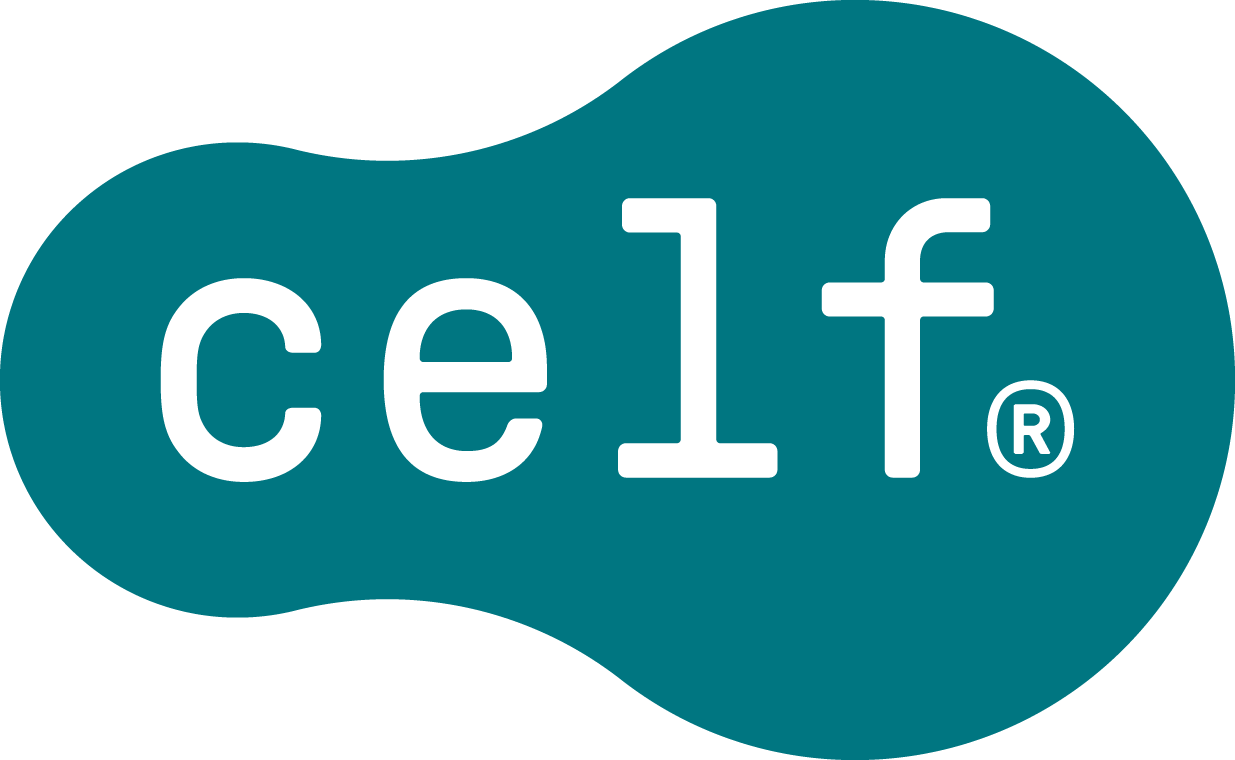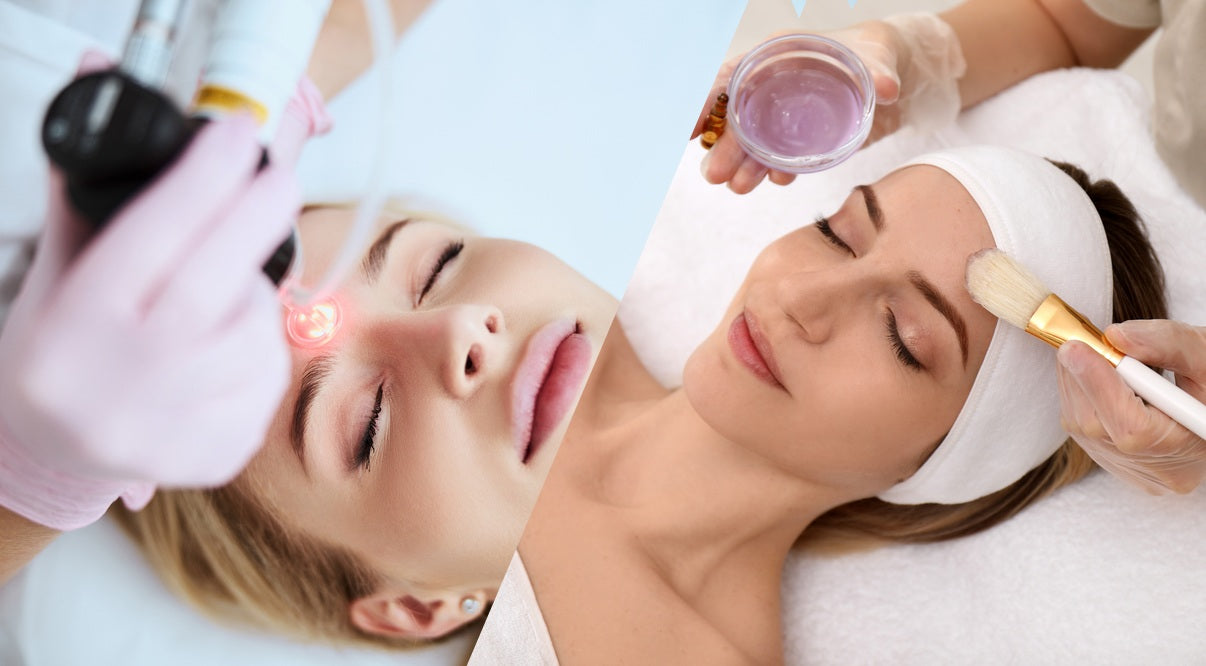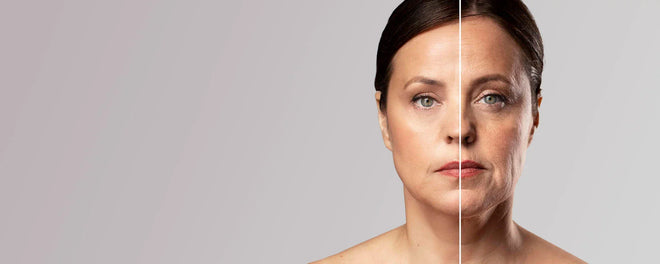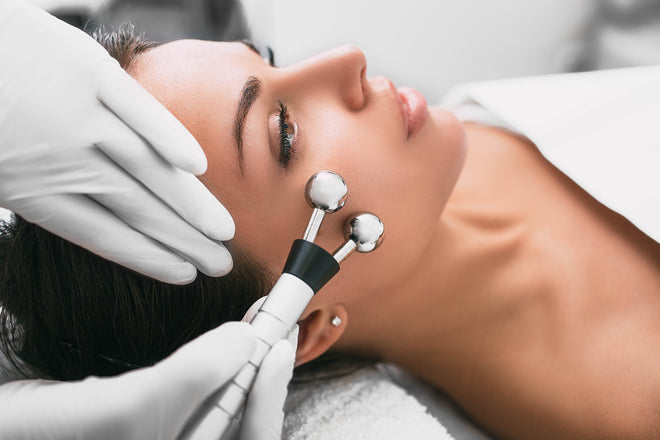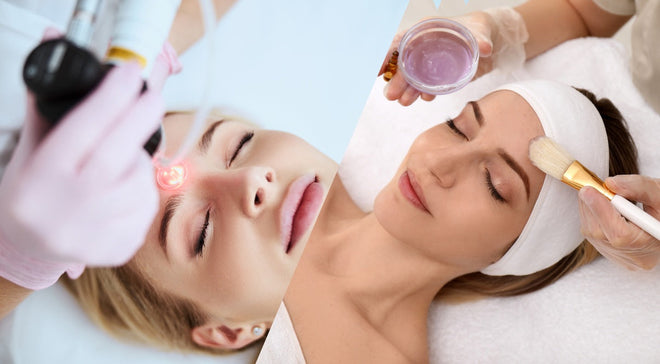Chemical Peels vs Laser Treatments: Which Might Suit Your Skin Best?
Table of Contents
Why Are People Comparing Chemical Peels and Laser Treatments?
The pursuit of radiant, youthful skin has never been stronger. With dermatology clinics offering everything from chemical peels to laser resurfacing, consumers often ask: Which treatment works better—and is it right for my skin?
The growing popularity of these advanced options reflects a broader trend: personalised skincare. Today’s consumers want targeted treatments that address their unique concerns while balancing safety, downtime, and cost.
At the same time, non-invasive technologies are reshaping the landscape. CELF Microvibration Therapy offers a derm-safe, at-home alternative powered by the Oral-B iO electric toothbrush. CELF Microvibration Therapy offers a gentle, at-home option designed to support healthy-looking skin and hydration, without the recovery time linked to clinical treatments.
Discover how CELF compares as a non-invasive alternative. → https://celf.beauty
What Is a Chemical Peel?
A chemical peel is a skin resurfacing treatment that uses exfoliating solutions—typically alpha hydroxy acids (AHAs) like glycolic or lactic acid, or beta hydroxy acids (BHAs) like salicylic acid—to remove damaged outer layers of skin.
-
Superficial peels: Use mild acids (like glycollic) to exfoliate only the epidermis.
-
Medium peels: Penetrate the middle dermis, often using trichloroacetic acid (TCA).
-
Deep peels: Reach lower skin layers and should only be carried out by qualified medical professionals, as recovery can take several weeks.
Chemical peels are often used to improve the appearance of uneven tone, surface texture, or dullness. Stronger peels may also be used under medical supervision to reduce the appearance of marks or discolouration. However, not all peels are suitable for every skin type. According to the Mayo Clinic, deeper peels require medical supervision and carry higher risks for darker skin tones.
What Is a Laser Skin Treatment?
Laser resurfacing uses focused light beams to refine the appearance of skin tone and texture, and to help skin look smoother or more even.
Two main categories exist:
-
Ablative lasers (e.g., CO₂, Er: YAG) remove thin layers of skin for more dramatic results.
-
Non-ablative lasers (e.g., Fraxel, Nd: YAG) heat the dermis without removing skin, stimulating collagen remodelling.
The American Academy of Dermatology notes that laser resurfacing for more visible texture or pigmentation concerns; results vary depending on laser type and skin condition. Downtime varies: fractional lasers may require days of healing, while ablative CO₂ can take weeks.
What Are the Key Differences Between Chemical Peels and Laser Treatments?
|
Factor |
Chemical Peel |
Laser Treatment |
|
Mechanism |
Uses exfoliating acids to renew surface layers |
Uses focused light energy to encourage skin renewal |
|
Downtime |
From 1 to 14 days, depending on the depth |
A few days to several weeks, depending on laser type |
|
Longevity |
Temporary improvement; maintenance often needed |
Longer-lasting appearance improvements for some people |
|
Comfort |
Mild stinging to temporary tingling |
Warm sensation; some find it uncomfortable |
Explore non-invasive skincare innovation with CELF → https://celf.beauty
Which Skin Conditions Does Each Treatment Address Best?
-
Acne scars: Certain laser treatments reach deeper layers of the skin, which may help improve the appearance of uneven texture or marks.
-
Hyperpigmentation & sun damage: Mild AHA peels are commonly chosen for surface discolouration or dullness.
-
Fine lines & wrinkles: Lasers deliver more significant long-term results.
-
Rosacea & sensitive skin: Both can trigger irritation; dermatologist guidance is critical.
See the Cleveland Clinic’s comparison for deeper insights.
What Are the Risks, Side Effects, and Downtimes?
-
Chemical peels: Redness, peeling, risk of post-inflammatory hyperpigmentation (PIH).
-
Lasers: Swelling, scabbing, potential burns, higher risk for darker skin tones.
On the Fitzpatrick Skin Scale, higher types (IV–VI) have a greater risk of pigmentation issues. DermNet NZ emphasises tailoring procedures carefully for darker skin.
Disclaimer: Always seek advice from a qualified practitioner before undergoing any professional skin treatment.
How Do Skin Tone and Type Influence Treatment Choice?
-
Sensitive/reactive skin: Gentle superficial peels may be safer.
-
Fitzpatrick IV–VI: Non-ablative lasers or mild peels are generally preferred.
-
Acne-prone skin: Salicylic peels are often recommended.
But for those who want zero downtime, CELF Microvibration Therapy offers a low-intensity at-home option designed to refresh and hydrate the skin’s surface through gentle vibration.
Try CELF as a derm-safe, at-home skin renewal tool → https://celf.beauty.
Which Treatment Shows Results Faster—Peels or Lasers?
-
Chemical peels: Results visible after healing (3–7 days for light peels; weeks for deep).
-
Lasers: May show early improvements, but collagen continues remodelling over months.
For gradual yet consistent results, Many users report that regular use leaves their skin feeling more hydrated and smooth, with no recovery time required..
What’s the Cost Comparison of Chemical Peels vs. Lasers?
-
Chemical peels: $150–$600 per session
-
Laser resurfacing: $800–$3,000 depending on type and depth
-
Insurance usually does not cover cosmetic procedures.
Compared to both, CELF offers a lower-cost, at-home skincare option that complements professional treatments.
Get clinically inspired microvibration benefits at a fraction of the cost. → https://celf.beauty
Are There Non-Invasive Alternatives to Peels and Lasers?
Yes—emerging beauty tech is offering new solutions.
-
Uses low-frequency microvibrations designed to refresh skin appearance and support hydration.
-
Enhances serum absorption for deeper hydration.
-
Provides gentle exfoliation for smoother skin.
-
Can be used alone or to complement in-office procedures.
As Harvard Health notes, non-invasive technologies are gaining traction for their balance of safety and results.
10: How Should You Decide Between Laser and Chemical Peel?
Ask yourself:
-
What’s my main skincare goal (pigmentation, scarring, anti-ageing)?
-
How much downtime am I willing to accept?
-
Is my skin type suited to aggressive resurfacing?
Always consult a board-certified dermatologist before undergoing professional procedures.
Take control of your skincare journey with CELF → Explore the science-backed path to luminous, revitalised skin at https://celf.beauty.
Disclaimer: Results vary depending on individual skin type and practitioner expertise.
Final Thoughts
Both chemical peels and laser treatments deliver impressive results for skin renewal, but they come with trade-offs in cost, downtime, and risk.
For those seeking a gentler, more accessible option, CELF Microvibration Therapy represents the next generation of beauty innovation—putting radiant-looking, hydrated skin care in your hands — a gentle, non-invasive way to enhance your daily routine.
FAQs
Q: What is better, chemical peels or laser treatments?
Both have unique benefits. Chemical peels exfoliate the top skin layers, improving texture, fine lines, and mild pigmentation. Laser treatments penetrate deeper, targeting wrinkles, scars, and stubborn pigmentation. The best choice depends on your skin type, concerns, and desired downtime.
Q: Should I do a chemical peel or laser treatment first?
Generally, dermatologists recommend starting with lighter chemical peels to improve skin texture and tolerance. More aggressive laser treatments can follow once the skin is prepped and healthy. A consultation is essential to create a safe, effective treatment plan.
Q: How much is a chemical peel compared to a laser peel?
Chemical peels tend to be more affordable, with costs varying based on strength and depth. Laser treatments are often higher-priced due to advanced technology and longer-lasting results. Prices vary by clinic and treatment area.
Q: Is a chemical peel or laser better for brown spots?
Superficial brown spots respond well to chemical peels, while deeper pigmentation often requires laser treatments for more effective, lasting results. Combining both methods is sometimes recommended for stubborn spots.
